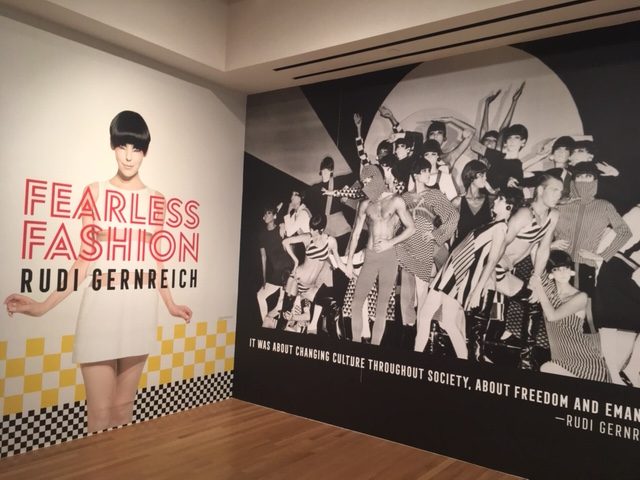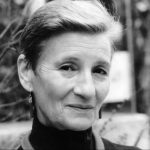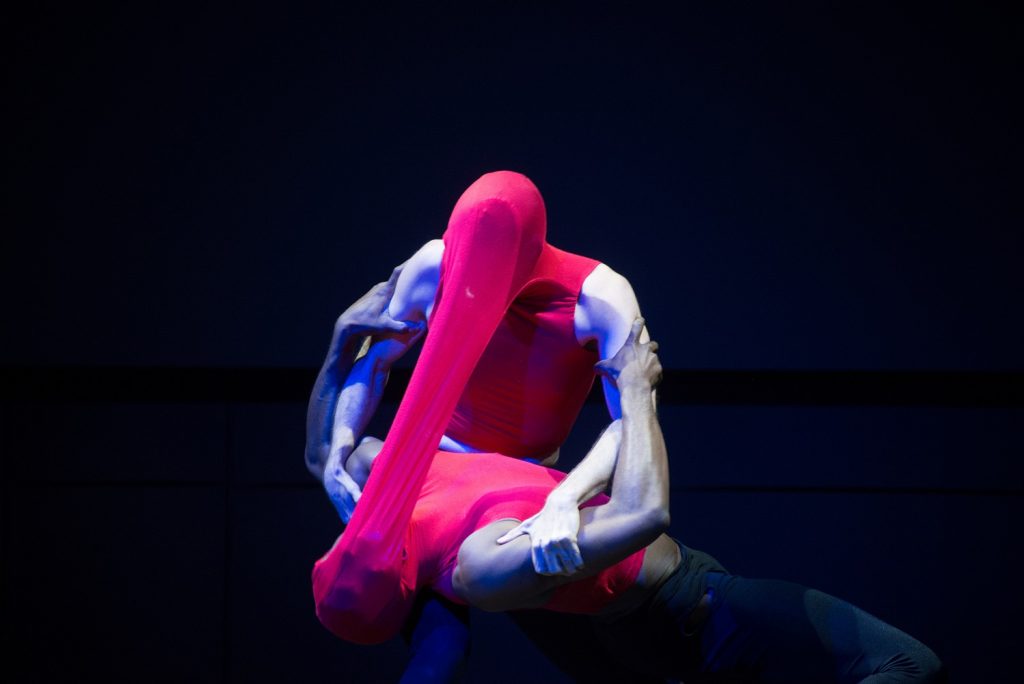Currently at the Skirball Cultural Center Museum, there is an amazingly beautiful exhibit titled Fearless Fashion: Rudi Gernreich displaying the work of this talented and daring Austrian-born American fashion designer. Gernreich was a dancer with the Lester Horton Dance Theater (1942 to 1948) who also designed costumes for Horton. After leaving the company, Gernreich went on to be regarded as one of the most innovative and dynamic fashion designers of the 1960s. Throughout the rest of his life Gernreich continued his connection to dance by collaborating with and designing costumes for five works by choreographer, Bella Lewitzky. Lewitzky was also a member of Horton’s company and considered by many to have been his muse and inspiration for the Horton technique.
On Sunday, June 23, 2019 the Skirball Cultural Center presented Fashion in Motion featuring Luminario Ballet performing sections of Bella Lewitzky’s 1976 seminal work Inscape and Turf (1992). This was followed by a panel discussion and Q&A with former Bella Lewitzky Dance Company members Sean Greene, Diana MacNeil and John Pennington which I had the honor to act as moderator.
After brief introductions by Jen Maxcy, Assistant Director of Programs at the Skirball Cultural Center, and Judith FLEX Helle, Founder and Artistic Director of Luminario Ballet, John Pennington spoke briefly about the long-lasting friendship and collaboration between Gernreich and Lewitzky. Before each dance, Pennington gave a brief but insightful background of the work.
Pennington told the audience that Lewitzky and Gernreich wanted Inscape to be non-linear and that during their discussions, they constantly used the word surreal to describe the work. He also described the very unique costumes that we were about to see. Gernreich created what he called the duotard which two dancers shared as one. New materials allowing a two-way stretch had just been created, and Gernreich set out to be the first to use them for dance.

Skirball Cultural Center Exhibit – Duotard designed by Rudi Gernreich for Bella Lewitzky’s “Inscape” – Photo by Ann Haskins
Premiering in 1976, Inscape was choreographed by Lewitzky, Costume Design by Gernreich, and the music was composed by Larry Attaway. For this performance, the Luminario Ballet performed three sections, two featuring Gernreich’s duotards and one in which the two male dancers wore connected red head coverings that allowed them to move separately, but greatly limited the distance between them.
In the first duet the two gorgeous, long limbed dancers, Andie Bartol and Kelly Vittetoe, wore a black duotard, and black skull caps. Sharing one leg, the costume gave the appearance of a three-legged being with two torsos and four arms. Limiting their movement and connecting them in this manner, the look was indeed surreal, giving one the impression of a beautiful moving sculpture.
The second section featured Audrey and Daniel Wagner costumed in a red duotard, red skull caps and each dancer wore a large red dot on one of their cheeks. Attaway’s music for this section, along with the the red dot and the somewhat mechanical movement, made the dancers appear like carved wooden characters moving in and out of an ornate German clock.
The third section performed by AJ Abrams and Louis Williams was physically the most challenging for the dancers. Here, Lewitzky had choreographed more aggressive movement which traveled and allowed the two men to turn, spin and move around each other while their head pieces were attached by stretchable fabric. Each man wore charcole black tights, and that against the bright red gave the work an even stronger sense of duality.
Pennington returned to talk about the next dance, TURF, choreographed by Lewitzky around the time of the 1992 LA riots that were in response to the police beatings of Rodney King. The costumes were designed by Lewitzky and MacNeil in the spirit of Gernreich, and the music was by Attaway.
The set for TURF included four large wooden boxes, and featured (in order of appearance) AJ Abrams, Louis Williams, David Tai Kim, and Cory Goei. It opened with each man performing on one of the cubes and evolved into a very athletic and confrontational dance about owning one’s personal space. The men moved on, around and inside the boxes, shifted the positions of them and to increase the tension between themselves, spun them on one corner like toy tops. The dance climaxed with all four men rushing into an aggressive tableau atop a mound of sculptured boxes.
Following TURF Pennington introduced me, MacNeil and Greene prior to our 20 minute discussion about Gernreich, Lewitzky, their collaboration and their deep friendship. It was wonderful to hear each of their personal stories about knowing and working with Gernreich, and their experiences performing Inscape and TURF. Lewitzky also had a personal connection to Merce Cunningham with whom I performed, and I was able to share a couple of those stories with the audience, as well as my own friendship and great admiration for Lewitzky. She was one of the most extraordinary performers I have had the pleasure to see dance, and who Cunningham personally told me was his favorite dancer. Having worked with Cunningham and artists Jasper Johns, Marcel Duchamp and Robert Rauschenberg, I understand how incredible it was to be in the presence of and to work with such remarkable artists as Bella Lewitzky and Rudi Gernreich.

(L to R) Jeff Slayton, Sean Greene, Diana MacNeil, John Pennington enjoying a humorous moment during panel discussion about Rudi Gernreich at the Skirball Cultural Center – Photo: Frances Chee
The exhibit Fearless Fashion: Rudi Gernreich continues at the Skirball Cultural Center Museum through September 1, 2019. For more information and tickets, click here.
For information on Luminario Ballet, click here.
Featured Photo: Gernreich Exhibit posters. Photo courtesy of Skirball Center.











